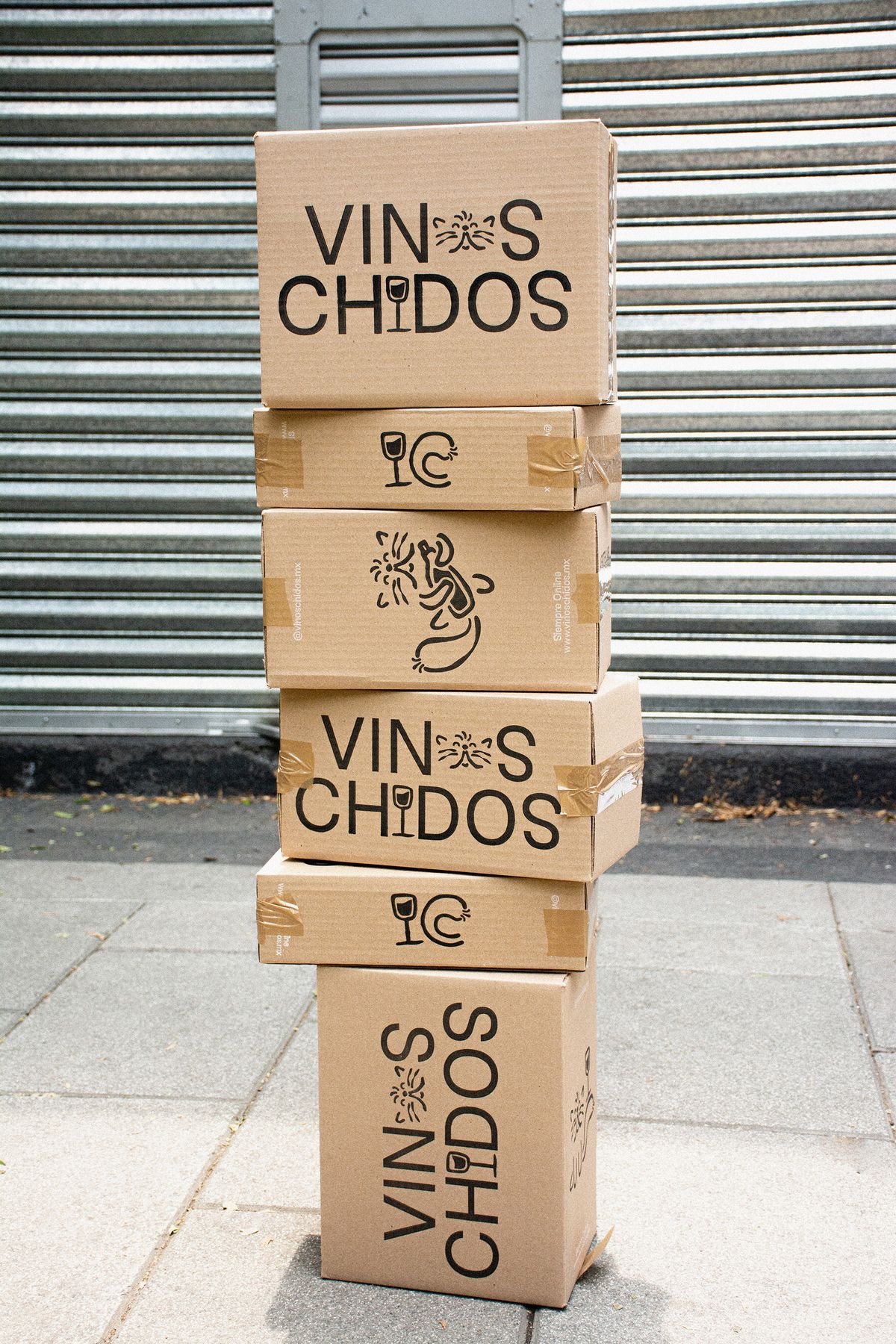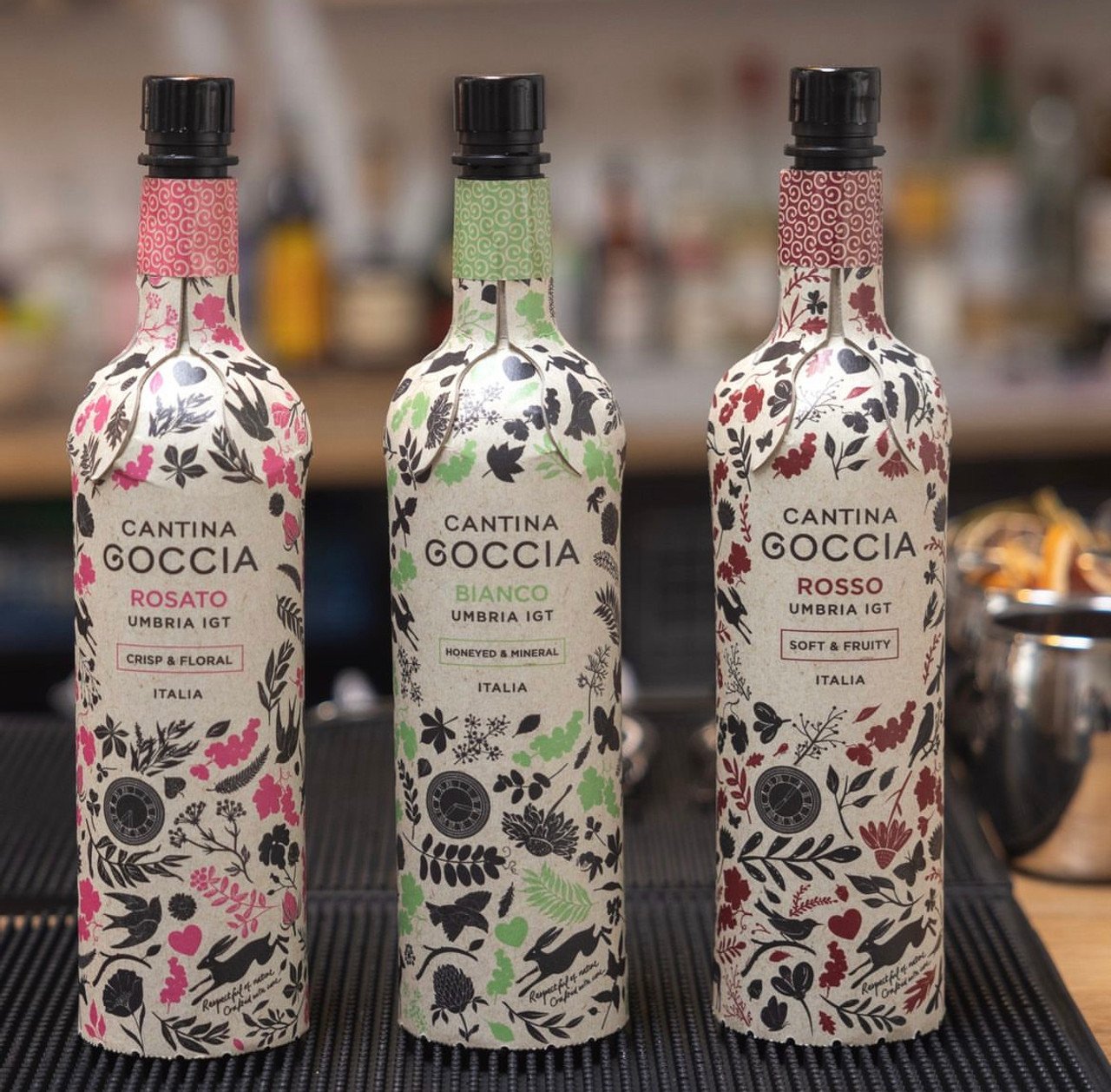The carbon footprint of wine bottles; a hefty weight
Is it time to rethink the wine industry’s vessel of choice?
The production of glass wine bottles continues to take a hefty toll on the wine industry, accounting for almost a third of carbon emissions (CSWA, 2011). In the manufacturing process, the main carbon culprit is the energy used for the melting and refining of the glass, expending 46% of the total energy required (Pellegrino, 2002). After, the bottle is further nested in a shippable box with an excessive bedding of bubble-wrap, paper or styrofoam peanuts - the vast majority of which end up in landfill, pilling onto the already weighty environmental burden of wine packaging.
Glass bottles have been the vessel of choice for manufacturers for centuries: “it’s sturdy, which enables shelf life; it’s inert, so it doesn’t react with the liquid to create off tastes” (Andrew’s, 2022) and as consumer’s we’ve become accustomed to the ceremony of opening and pouring a glass bottle when enjoying a drink. However, with green house gas emission soaring to “more than 50 billion metric tons of carbon dioxide equivalent (GtCO₂e) annually” (Tiseo, 2023) and the earth exponentially warming, socially responsible companies should look to packaging solutions that improve on the sizeable emissivity of conventional glass bottles, in our overarching mission of achieving global sustainable development (United Nations, 2015).
In this post, we’ll unpack ‘outside-of-the-bottle’ sustainable solutions making headway within the wine market.
Canned Wine
Sustainability comes is cans — and so does wine. The lightweight and portable cylindrical vessel is the fastest growing packaging alternative in the wine market today, with a compound annual growth rate in Europe (between 2012 and 2022) of “6.1% for still wines and 14.4% for sparkling wines” (Ruggeri et al., 2022). Cans are a format we’re all familiar with; drinks of all types — whether it be alcoholic or non-alcoholic — are increasingly appearing in aluminium cans, so it’s no surprise that the wine industry has hopped on the trend as well. Can’s growing success can be attributed to the number of environmental and economic benefits the packing alternative offers through-out its life cycle.
In transit: cans engender hefty shipping cost savings for vintners. A litre’s worth of wine in cans “weighs 30% less than a litre’s worth of glass wine bottles” (Mobley, 2022). Further, cans are easily stackable ensuing unmatched cubic efficiency during transportation (Metal Packaging Europe, n.d). The Lighter, compact packaging not only offers economic advantages — aluminium cans can vastly reduce the environmental burden of transporting wine. A comparative life cycle assessment from the International Aluminium Institute (2023) found that the carbon footprint of a 12oz glass bottle is more than six times higher than a 16oz aluminium can, a considerable difference.
Cans continue to be green even at the end of their life. Aluminium is infinitely recyclable: in fact, almost 75% of the aluminium ever produced is still in use today (International Aluminium Institute, n.d.). This is due to the sizeable recycling rate of drink cans, with 82% of those sold recycled in 2020 (Every Can Counts, 2021), far higher than glass, which is why 32.2 million tonnes of your glass bottles ended up in landfill in 2019 (International Aluminium Institute, 2022). What’s more, recycled aluminium saves around 3 million tonnes of greenhouse gas emissions (Wherefrom, 2020). So, why is it that aluminium cans are not the industry’s packaging of choice?
It really comes down to consumer preferences. Despite, wine drinkers becoming more receptive to alternative packaging, we still consider wine in cans to be lesser quality. But that’s really not the case, being relatively inert, cans are perfectly suitable for preserving the quality of wine, and their opaque nature are guaranteed to prevent light strike (damage to wine caused by UV light) (The Wine Merchant, 2023). In combination with its easy to carry nature, cans allow you to enjoy quality wine, picnicking at the beach or dancing at the club, which is revolutionary for those of us accustomed to a glass of red over beer.
Bag-In-Box (BIB) Wine
Bag-In-Box wine, or goon as the Aussies call it, is often misconstrued. Percived as poor quality and cheap, the humble box wine gets a bad rep. But with eco-conscious preferences driving a revision of wine packaging, is it time we dismiss the snobbery of the wine industry and give Bag-In-Box another go? There are myriad good reasons that might persuade you.
Firstly, boxed wine offers relief from the weighty burden of glass bottles, with 4L of BIB wine weighing around half as much as its bottle equivalent (Minimum wines, 2022). The lightweight alternative enables considerable transport and storage savings, which can be passed onto the consumer — meaning you can enjoy top quality wine at a cheaper price. Switching to box, not only benefits your wallet. An assessment published by the California Sustainable Winegrowing Alliance (CSWA) found that the carbon footprint of distributing BIB is 60% less when compared to the same volume of wine in glass bottles (Barth, 2022). The switch to Bag-In-Box, seems like the obvious choice, with GHG reductions “equivalent or retiring 400,000 cars” (Colman, 2008).
If that’s not enough to convince you, another huge perk of boxed wine its longevity. The bag in which the BIB system comprises, is made from a metal used polyester material (MET/PET) (Fradique et al., 2011) providing the packaging with excellent barrier properties against oxygen, moisture and UV light. And as you pour a glass of wine, this bag will contract, in turn minimising any oxygen ingress — keeping wine fresh weeks after the first pour. Although, if you’re anything like me, the wine won’t last more than a few days.
Currently, the main challenge of Bag-In-Box comes after its use. Although the box that BIB comes in is 100% recyclable, the bag presents a challenge. Metallised plastic film cannot be recycled through standard process in the UK, so in that respect glass might have boxed wine beat.
Frugalpac
It looks like the traditional wine bottles we’re accustomed to seeing. But it’s paper. Frugalpac is the Ipswich-based business helping to decarbonise the wine industry.
Like canned and boxed boxed wine, the 75cl Frugal bottle offers both coast savings and carbon reductions during transit, being up to “five times lighter than a normal glass bottle” (Frugalpac, 2020). These savings extend to all stages of the bottle’s life cycle. An independent Life Cycle Assessment (LCA) by Internet, looked at the Frugal Bottle’s environmental impact from ‘cradle-to-grave’ and found that the paperboard packaging has a carbon footprint of up to six times lower than a glass bottle, transplanting to “around 420 to 430 fewer grams of carbon per bottle” (Dodds, 2023).
Frugalpac also addresses the disposal challenges of its cardboard counterpart (BIB), with the plastic food-grade liner separable from the outer paper bottle, making recycling easy for consumers. After you’ve enjoyed your bottle of wine, you simply detach the plastic lining from the paper bottle and put them in your respective recycling bins, easy.
A final word
It’s ambitious to think that cans, BIB or Frugalpac will ever entirely replace the glass wine bottle. After all, the glass bottle’s success is deeply rooted in a long history of drinking wine and consumer (mis)conception regarding the lesser quality of alternative packaging. Glass will continue to remain the status-quo, until this stigma is diffused. It is only in recent years, that we have seen a shift in the perception of screw-top bottles, making its way into the mainstream, and yet there still exists a perception that high-end wines only use corks. In the midst of a planetary emergency, we should dismiss the pretension of the wine industry and embrace packaging that makes sense for the planet and for us as consumers.
Bibliography
‘A Circularity Case For Aluminium Compared With Glass And Plastic’ (2022). International Aluminium Institute . Available at: https://international-aluminium.org/wp-content/uploads/2022/02/Aluminium-vs-glass-and-plastic-FINAL-Information-Sheet-1.pdf. [Accessed: 1 November 2023]
BARTH, J. (2022). ‘With a Reduced Carbon Footprint, Bag-In-Box Wine Increases Market Share’. Forbes [online]. Available at: https://www.forbes.com/sites/jillbarth/2022/02/21/with-a-reduced-carbon-footprint-bag-in-box-wine-increases-market-share/?sh=4389d3336932 [Accessed: 1 Nov 2023].
‘Benefits | Metal Packaging Europe’. (2023). metalpackagingeurope.org [online]. Available at: https://metalpackagingeurope.org/benefits#:~:text=Due%20to%20their%20inherent%20strength [Accessed: 1 November 2023]
‘Beer Packaging: Aluminium Cans or Glass Bottles?’ (2020). wherefrom [online]. Available at: https://news.wherefrom.org/beer-packaging-aluminium-cans-or-glass-bottles/#:~:text=An%20aluminium%20can%20of%20330ml [Accessed: 1 Nov 2023].
CSWA, (2011) ‘California Wines Carbon footprint’. Available at: http://www.sustainablewinegrowing.org/docs/California_Wine_Executive_Summary.pdf [Accessed: 1 November 2023]
COLMAN, T., (2008) ‘Drink Outside the Box’. NYtimes.com [online] Available at: https://www.nytimes.com/2008/08/18/opinion/18colman.html [Accessed: 1 November 2023]
Comparing the Carbon Footprints of Beverage Containers. (2023). International Aluminium Institute [online] Available at: https://international-aluminium.org/wp-content/uploads/2023/01/Comparing-the-carbon-footprints-of-beverage-containers.pdf. [Accessed: 1 November 2023]
DODDS, W. (2023). ‘Could Paper Bottles Be the Future of Wine and Spirit Packaging?’ foodmanufacture.co.uk [online]. Available at: https://www.foodmanufacture.co.uk/Article/2023/08/22/how-paper-bottles-might-replace-glass-in-wine-and-spirits#:~:text=The%20results%20of%20these%20efforts [Accessed: 1 Nov 2023]
FRADIQUE, S.,HOGG,T., PEREIRA, J., & POÇAS, M.F.F., (2011). ‘PERFORMANCE OF WINE BAG-IN-BOX DURING STORAGE: LOSS OF OXYGEN BARRIER’. Italian journal of food science 23, 11-
‘Frugal Bottle – the Recycled Paper Wine Bottle That Thinks Outside the (Wine) Box’. (2020). Frugalpac [online]. Available at: https://frugalpac.com/frugal-bottle-the-recycled-paper-wine-bottle-that-thinks-outside-the-wine-box/. [Accessed: 1 November 2023]
‘HOW IT STACKS UP: The Sustainability of Boxed Wine.’ 2022. Minimum Wines [online]. Available at: https://www.minimumwines.com/blogs/theorist/the-sustainability-of-boxed-wine [Accessed: 1 Nov 2023].
MOBLEY, E. (2022) ‘To Drink Sustainably, Opt for Wine in Aluminum Cans, Not Glass Bottles’. San Francisco Chronicle [online]. Available at: https://www.sfchronicle.com/food/wine/article/To-be-environmentally-responsible-should-we-give-17021727.php# [Accessed: 1 Nov 2023].
PELLEGRINO, J.L. (2002) ‘Energy and Environmental Profile of the U.S. Glass Industry’. www.osti.gov [online]. Available at: https://www.osti.gov/servlets/purl/1218643 [Accessed: 1 Nov 2023].
RUGGERI, G., MAZZOCCHI, C., CORSI, S. & RANZENIGO, B. (2022) ‘No More Glass Bottles? Canned Wine and Italian Consumers’. Foods11(8)
‘Recycling’. (n.d.) International Aluminium Institute [online]. Available at: https://international-aluminium.org/work_areas/recycling/#:~:text=Aluminium%20is%20one%20of%20the. [Accessed: 1 November 2023]
TISEO, I. (2023) ‘Greenhouse Gas Emissions Worldwide - Statistics & Facts ’. Statista [online]. Available at: https://www.statista.com/topics/5770/global-greenhouse-gas-emissions/#topicOverview. [Accessed: 1 Nov 2023]
‘The Wine Merchant Magazine Issue 130’. (2023). The Wine Merchant [online]. Available at: https://issuu.com/winemerchantmag/docs/wine_merchant_issue_130_for_web?fr=xKAE9_zU1NQ [Accessed: 1 Nov 2023].
United Nations (2015) Goal 12 | Ensure Sustainable Consumption and Production Patterns, United Nations. Available at: https://sdgs.un.org/goals/goal12. [Accessed: 23 October 2023]
‘UK Drink Can Recycling Rate Hits All Time High’. 2021. Every Can Counts [online]. Available at: https://everycancounts.co.uk/uk-drink-can-recycling-rate-2021/ [Accessed: 1 Nov 2023].



